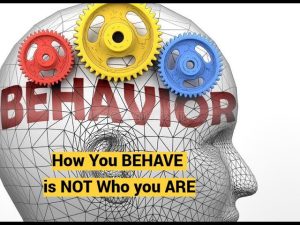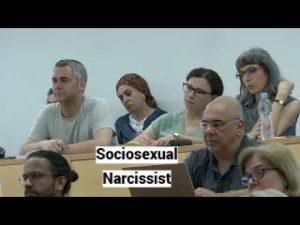1. Self-Perception and Narcissistic Identity
- The speaker describes a personal self-view as a calculating machine, similar to Adolf Hitler’s phrase, reflecting detachment and self-monitoring with both criticism and grandiosity, employing a third-person narrative to create objectivity and disguise low self-esteem. He relates this to his narcissism and a preference for machines as emotionally invulnerable entities [00:00].
- Narcissism is characterized by a false self that isolates the individual from internal pain and a true self that is diminished, creating a perpetual internal battle and disassociation from emotions and identity [08:48].
2. Childhood Trauma and Development of Narcissism
- The speaker recounts an abusive, traumatic childhood marked by physical, psychological, and verbal torture, leading to an arrested emotional development and the formation of pathological narcissism as a coping mechanism [01:55].
- Narcissism emerges as a defensive adaptation to continuous abandonment and torment, providing functionality and survival despite being “rigid, doctrinaire, and compulsive,” yet also limiting and inhibiting [04:17].
3. Emotional Experience and Psychological Effects
- Pain is experienced not in isolation but as a collective relentless onslaught, leading to profound sadness, emotional void, and an inner feeling of annihilation and non-existence [03:28].
- The speaker expresses an overwhelming sadness, anxiety, and dissociation resulting in estrangement from self and reality, describing life as surreal, unpredictable, and often terrifying [25:08].
- Emotional detachment leads to lack of empathy, inability to form genuine emotional connections, and viewing others instrumentally or cartoonishly [15:30].
4. Narcissism’s Cognitive Awareness vs Emotional Deficits
- Despite deep intellectual understanding and self-awareness of narcissistic traits and pathology, there is no corresponding emotional insight or motivation for meaningful change; awareness remains a detached cognitive exercise without transformation [20:12].
- Narcissistic introspection tends to be an arid bookkeeping exercise aimed at enhancing narcissistic supply rather than healing, often resulting in frustration for therapists due to repeated relapses [22:00].
- Attempts at self-change often follow crises such as divorce, bankruptcy, or incarceration, but relapse into previous patterns is common, with only behavior modification—not true healing—being achievable [23:15].
5. Role of the False Self and Inner Conflict
- The false self serves to protect the traumatized true self but acts as a rigid, impenetrable barrier separating the individual from past pain and emotional reality; the conflict between the true and false self is described as a life and death battle [14:35].
- The narcissist’s identity is a precarious coalition between a sadistic inner critic and a grandiose false ego, functioning mechanically like a robot or automaton, which represents the narcissist’s ideated self [19:00].
- The speaker describes severe dissociation, alienation, and a sense of living life as an observer or protagonist in a movie, further indicating fragmentation of self and responsibility [27:10].
6. Interpersonal Relationships and Social Impact
- The speaker indicates fear and distrust of women stemming from early injuries and repeated interpersonal betrayals and how relationships often end painfully [05:54].
- Narcissistic behavior leads to exploitative, callous, and sometimes sadistic interactions, though the speaker insists he is not evil but indifferent, suggesting indifference as a core of evil [16:30].
- Therapy is often frustrating, with the emphasis shifting toward accommodating those around the narcissist rather than achieving true change in the narcissist [23:50].
7. The Illusion of Change and Therapy Challenges
- Narcissists often seek therapy to improve skills for obtaining narcissistic supply rather than to heal; they rarely achieve authentic self-understanding or emotional transformation [22:30].
- The speaker asserts that narcissists can modify behavior but cannot achieve true healing or cure, criticizing claims of “recovered narcissists” as fraudulent [24:05].
- Older, psychopathic narcissists sometimes improve with age, but most do not experience genuine change [23:50].
8. Existential Reflections and Final Thoughts
- The speaker expresses a profound sense of loss, estrangement, and despair, describing existence as a “life desert” dominated by sadness and perpetual inner conflict [28:20].
- He reflects on rewriting personal history and relationships to suit the false self, resulting in a distorted sense of identity and memory [29:40].
- The talk concludes with the metaphor of narcissism as an alien presence controlling identity and highlighting the hopelessness of overcoming this entrenched self-division [31:20].
This structured summary reflects the detailed and insightful exploration of narcissism, self-identity, emotional challenges, and therapeutic difficulties as presented in the meeting.






